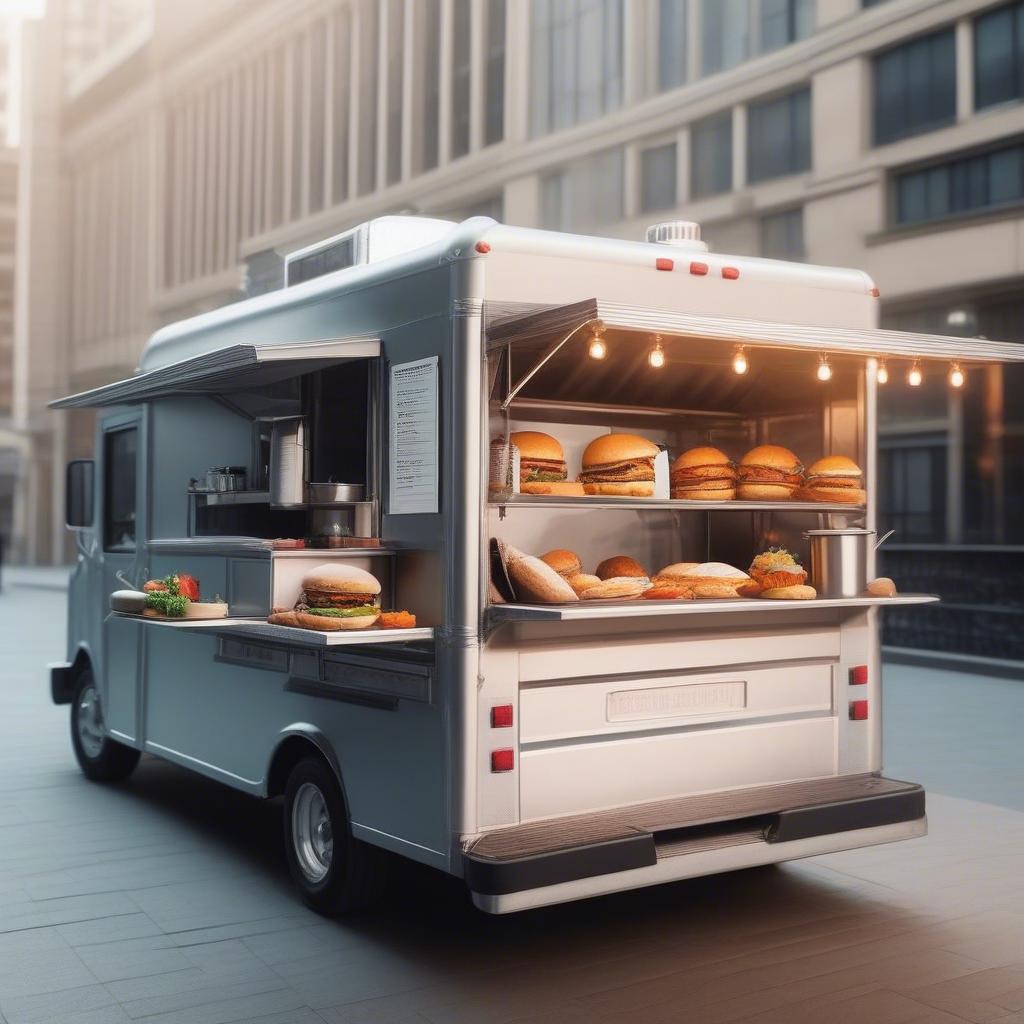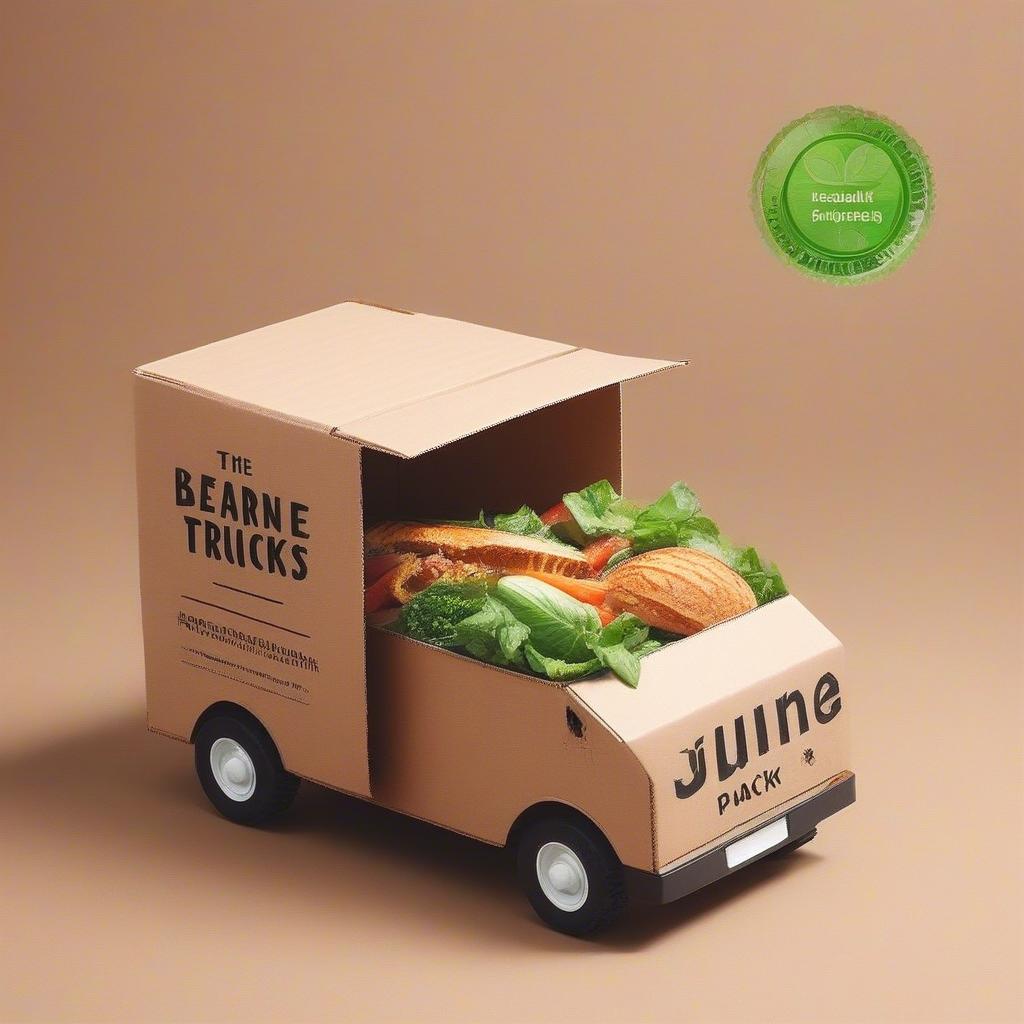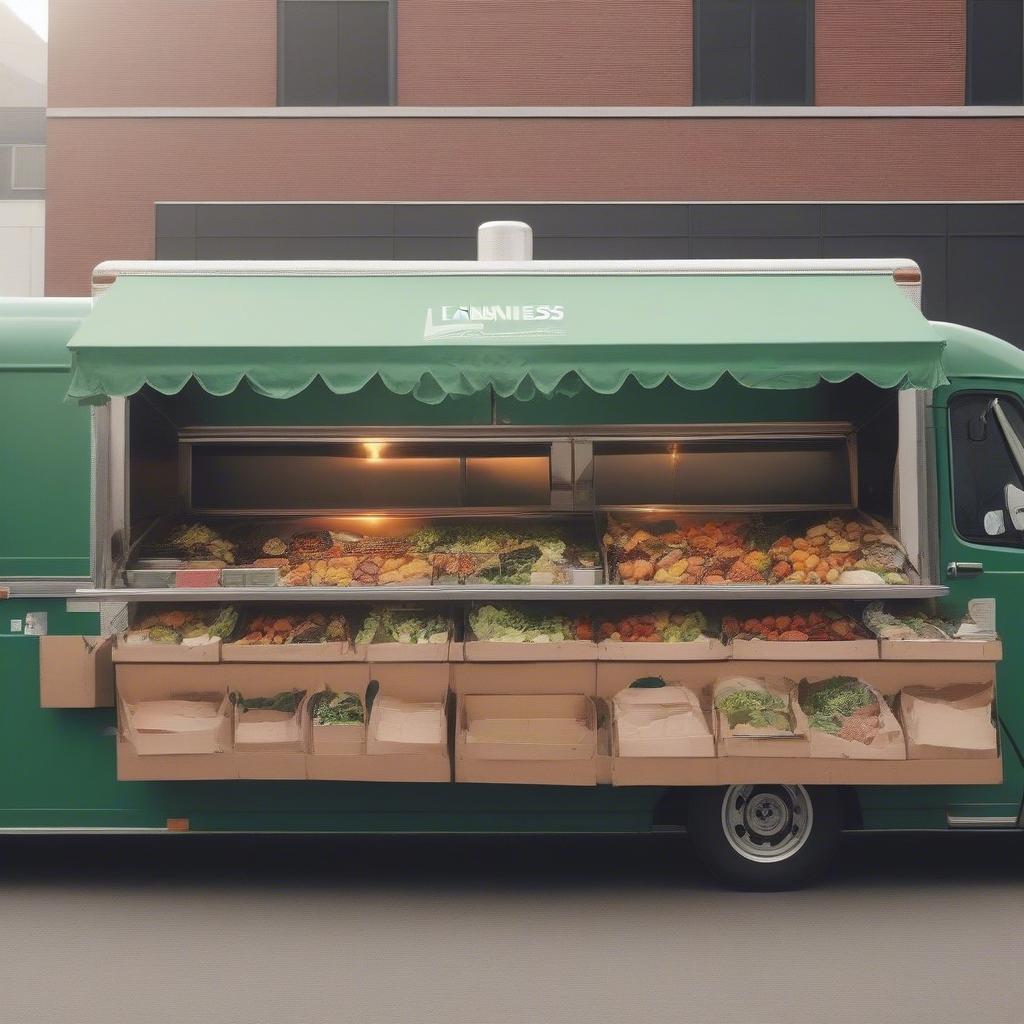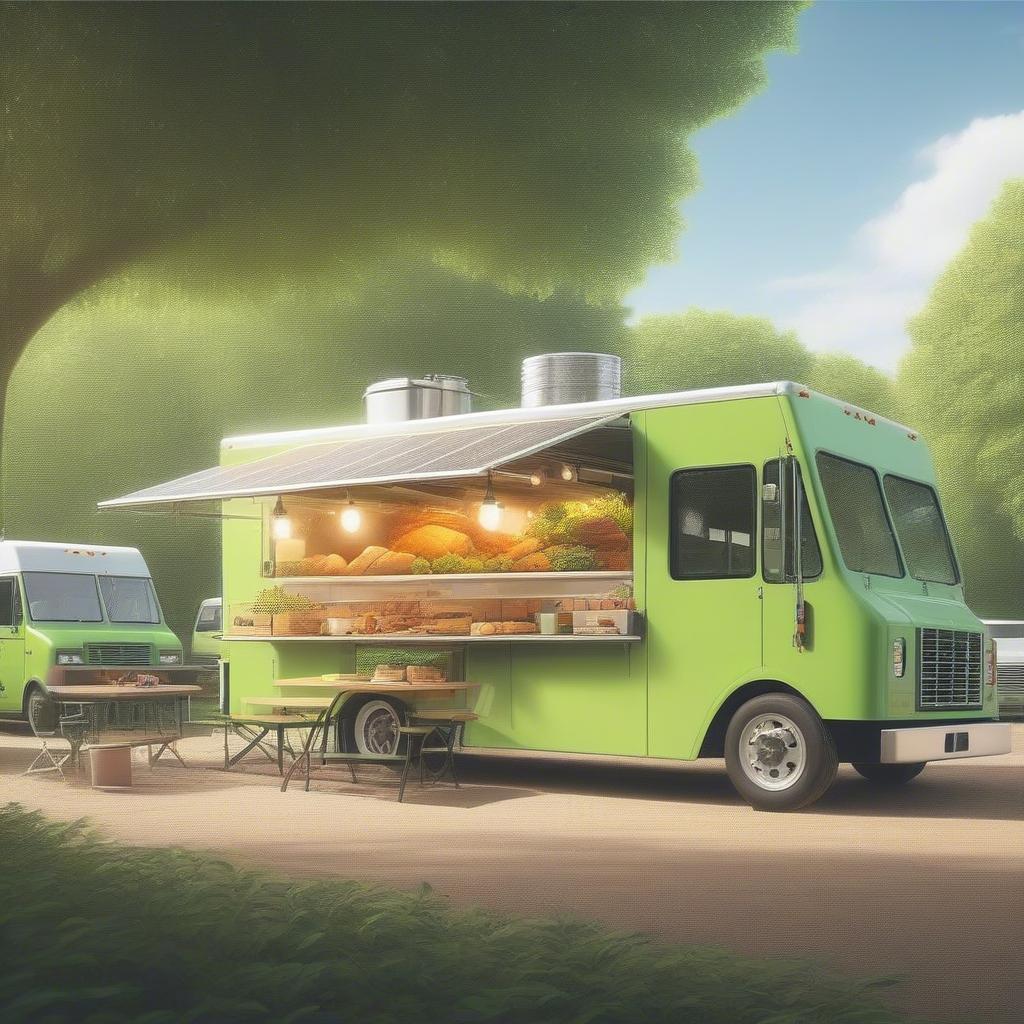
So, you’re dreaming of slinging deliciousness from a mobile kitchen, the wind in your hair, and the smell of sizzling onions wafting through the air? Starting a food truck business is an exciting adventure, but it’s also one that requires careful planning and execution. Don’t worry, though! This ultimate checklist will guide you through each crucial step, ensuring you’re prepped for success. We’ll tackle everything from initial planning to getting those wheels turning and serving hungry customers. Let’s get rolling!
I. Pre-Launch: Laying the Foundation for Success
Before you even think about buying a truck, you need a solid foundation. This initial planning phase is where your startup checklist begins, and it’s crucial for long-term viability.
A. Concept Development: Defining Your Niche
1. Find Your Culinary Passion
What kind of food sets your soul on fire? What are you genuinely excited to create and share with the world? The most successful food trucks are often built on a foundation of passion. If you’re passionate about your cuisine, it will shine through and attract customers. This is a cornerstone of your food truck tips arsenal.
2. Identify Your Target Audience
Who are you trying to reach? Are you targeting busy office workers, late-night crowds, families, or a more specialized demographic? Understanding your ideal customer will guide your menu development, pricing, and location choices.
3. Develop a Unique Brand Identity
Your brand is more than just a logo; it’s your personality. What kind of experience do you want to offer? Think about your name, logo, color scheme, and overall vibe. Make it memorable and reflective of your food and target audience.
4. Craft a Winning Menu
Keep it focused. Don’t overwhelm customers with a vast menu. Start with a few signature items you do exceptionally well. Focus on quality ingredients and recipes that are both delicious and easy to prepare in a food truck environment. Offer a mix of popular items and some unique dishes that set you apart.
B. Business Planning: Setting Realistic Goals
1. Write a Detailed Business Plan
This document is your roadmap to success. It should outline your concept, target market, marketing strategy, financial projections, and operational plan. A strong business plan is essential when seeking funding and guides your daily decisions. This is not just for show – it’s a living, breathing document to help with your startup checklist.
2. Conduct Thorough Market Research
Analyze your competition. What are they doing well? Where are their weaknesses? Identify gaps in the market that you can fill. Understand local regulations and licensing requirements. Market research is essential to prevent costly mistakes.
3. Develop Realistic Financial Projections
Estimate your start-up costs, operating expenses, and potential revenue. Create a detailed budget and cash flow forecast. Be honest about your financial situation and plan for contingencies. It’s crucial to know how to start from a financial perspective.
4. Secure Funding
Explore your financing options. Do you need a loan, investors, or will you bootstrap? Consider options like small business loans, crowdfunding, or personal savings. Have a solid plan to ensure financial stability.
C. Legal and Regulatory Compliance: Playing by the Rules
1. Obtain Necessary Licenses and Permits
Research the specific requirements for your location. You’ll likely need permits from the health department, a business license, and possibly permits for parking and vending. Don’t skip this step, it’s crucial.
2. Secure Insurance Coverage
Protect yourself and your business with appropriate insurance. Consider general liability, business property, and workers’ compensation insurance. Insurance is essential to your how to start foundation.
3. Comply with Health and Safety Regulations
Food safety is paramount. Understand and adhere to all food handling, storage, and preparation guidelines. Get certified in food safety practices and train your staff accordingly.
4. Understand Zoning and Parking Laws
Research where you are legally allowed to operate your food truck. Know the rules for parking, vending, and operating in specific areas. Don’t get caught off-guard by local restrictions.
II. Acquisition and Build-Out: Getting the Wheels in Motion
Once you have a strong plan, it’s time to get physical. This phase is crucial for bringing your vision to life and ensuring your food truck is fully functional.
A. Selecting the Right Food Truck
1. Determine Your Needs
What size truck do you need? Consider your menu, the number of staff you’ll have, and the equipment you’ll require. Don’t go too big or too small; find the right fit for your needs.
2. Buy Used or New?
A used truck can save you money initially, but be prepared for potential repairs. A new truck offers a warranty, but comes with a higher price tag. Weigh the pros and cons carefully.
3. Inspect Thoroughly
Whether you buy used or new, inspect the truck carefully. Check the engine, transmission, electrical systems, plumbing, and kitchen equipment. Don’t rely on appearances alone, and consider an expert opinion.
4. Negotiate the Price
Don’t be afraid to negotiate. Research the market value of similar trucks and try to get the best possible price. This can free up capital for other areas.
B. Designing the Interior and Layout
1. Optimize for Efficiency
Design your kitchen for maximum efficiency. Consider the flow of your food preparation process and ensure everything is within easy reach. Proper planning helps maximize your food truck tips effectiveness.
2. Choose the Right Equipment
Select high-quality, durable equipment that meets your needs. Consider the space limitations and power requirements of each item. Proper equipment can minimize downtime and enhance performance.
3. Create a Comfortable Workspace
Ensure that your workspace is comfortable for your staff. Proper lighting, ventilation, and ample storage are all important. Happy staff equals happy customers.
4. Install Proper Plumbing and Electrical Systems
Ensure your plumbing and electrical systems are up to code. Use professional installers to avoid future problems and ensure safe operation.
C. Branding Your Mobile Kitchen
1. Wrap Your Truck
A professionally designed vehicle wrap is an eye-catching way to attract attention. Use your logo, color scheme, and branding elements to create a cohesive and memorable look. This is a crucial part of your startup checklist.
2. Install Eye-Catching Signage
Make sure your menu and branding are clearly visible to potential customers. Use high-quality, weather-resistant signs that are easy to read from a distance.
3. Create an Inviting Atmosphere
Even on a food truck, you can create an inviting atmosphere. Consider adding flowers, small decorations, and comfortable seating for your customers. The details can make a big difference.
III. Operations and Logistics: Keeping the Engine Running
Once your truck is ready, it’s time to think about daily operations and logistics. This phase is about ensuring smooth and efficient service.
A. Inventory Management and Supply Chain
1. Identify Reliable Suppliers
Find local suppliers who can provide you with fresh, high-quality ingredients. Build good relationships with your suppliers to ensure consistent product delivery. This is vital to how to start successfully.
2. Establish a Proper Inventory System
Track your inventory carefully to prevent waste and ensure you always have enough of everything. Use a spreadsheet or inventory management software to stay organized.
3. Plan for Efficient Storage
Maximize your limited storage space. Organize your inventory to make it easy to find and use. Proper planning is crucial to keep costs down.
4. Track Food Costs
Monitor your food costs carefully. Calculate the cost per portion and set appropriate pricing. Managing food costs is essential for profitability.
B. Staffing and Training
1. Hire the Right People
Find staff who are reliable, friendly, and have a passion for food. Look for team players who can handle the fast-paced environment of a food truck.
2. Train Your Staff Thoroughly
Provide comprehensive training on food handling, safety, customer service, and your specific menu items. Consistency is key, so make sure everyone is on the same page. This is a critical food truck tip.
3. Delegate Responsibilities
Assign clear roles and responsibilities to each staff member. This will help to keep operations running smoothly.
4. Maintain a Positive Work Environment
Create a supportive and positive work environment. Treat your staff with respect, and they’ll be more likely to provide great service to your customers.
C. Daily Operations and Workflow
1. Develop a Daily Checklist
Create a checklist for opening and closing procedures. Ensure all tasks are completed consistently to maintain standards and smooth operations.
2. Streamline Your Order Process
Develop a simple and efficient order process. Use technology, such as handheld ordering devices, to speed up the process and minimize errors.
3. Master Time Management
Develop efficient workflows to prepare food quickly and efficiently. Proper planning will reduce wait times and keep customers happy.
4. Handle Cash and Transactions Securely
Set up a system for handling cash and transactions securely. Consider using a POS (Point of Sale) system to manage sales and inventory.
IV. Marketing and Customer Engagement: Getting the Word Out
Having a great food truck is only part of the equation. You also need to get the word out and connect with your customers.
A. Building Your Brand Online
1. Create a Website or Social Media Presence
Establish an online presence where customers can find your menu, location, and hours of operation. Social media is a powerful tool to engage with your target audience. This is an essential aspect of your startup checklist.
2. Share High-Quality Photos and Videos
Use visually appealing photos and videos to showcase your food and your truck. Quality content is more likely to be shared and attract new customers.
3. Engage with Your Followers
Respond to comments and messages promptly. Use social media to announce your daily location, special offers, and menu updates. Customer engagement is key to building loyalty.
4. Leverage Local Online Communities
Join local Facebook groups, forums, and other online communities. Promote your food truck and offer special deals to local residents.
B. Connecting with Your Local Community
1. Participate in Local Events and Festivals
Look for opportunities to participate in local events, festivals, and markets. This is a great way to get exposure and reach new customers.
2. Partner with Local Businesses
Collaborate with other local businesses to cross-promote your food truck. Consider offering discounts or special deals for their employees.
3. Offer Catering Services
Catering is a great way to generate additional revenue. Market your catering services to local businesses and private clients.
4. Get Involved in Charity Events
Participating in charity events can be a great way to give back to the community and raise awareness of your brand. It’s also a good way to build goodwill with locals.
C. Customer Service: The Heart of Your Business
1. Provide Exceptional Customer Service
Treat every customer like they are your most important. A friendly attitude and a smile go a long way. Make sure your staff understands the value of good service and your brand values.
2. Listen to Customer Feedback
Ask for feedback and make changes based on what your customers are telling you. Customer input is invaluable for improvement.
3. Build a Loyal Customer Base
Encourage customers to become regulars with a loyalty program or special offers. Repeat business is essential for long-term success.
4. Create a Memorable Experience
Go above and beyond to make every interaction with your food truck a memorable one. The little things make all the difference.
V. Continuous Improvement and Growth: Staying Ahead of the Game
Starting a food truck is not a “set it and forget it” venture. It requires ongoing effort and adaptation to succeed.
A. Monitoring Performance and Analyzing Data
1. Track Key Metrics
Monitor key metrics such as sales, customer counts, and expenses. Use this data to identify trends and make informed decisions.
2. Analyze Your Financial Statements
Review your financial statements regularly to identify areas for improvement. This is also crucial for your how to start journey’s long-term success.
3. Gather Customer Feedback
Solicit feedback from your customers through surveys, online reviews, or in-person conversations. Use this feedback to make improvements.
4. Adjust Your Strategies as Needed
Be prepared to adapt your strategies based on your data and feedback. Continuous improvement is essential for long-term success.
B. Staying Current with Industry Trends
1. Research New Food Trends
Stay up to date on the latest food trends and adapt your menu to meet changing customer tastes. Look for unique flavors and dishes that set you apart.
2. Invest in New Equipment and Technology
Stay ahead of the curve by investing in new equipment and technology that can improve efficiency and enhance the customer experience.
3. Attend Industry Events and Conferences
Network with other food truck owners and attend industry events to learn new tips and best practices.
4. Experiment and Innovate
Don’t be afraid to experiment with new flavors, dishes, and marketing strategies. Innovation is essential for keeping your business fresh and exciting. This also helps your food truck tips for success in the long run.
C. Expanding Your Business
1. Consider Adding a Second Truck
If your business is successful, you might consider adding a second truck. This is a great way to increase your reach and revenue.
2. Explore Additional Revenue Streams
Consider additional revenue streams such as catering, delivery, or selling merchandise.
3. Partner with Franchisers
Explore franchising opportunities to grow your brand. Franchising helps spread the business to other areas, bringing more success.
4. Continuously Seek Opportunities for Growth
Always be looking for opportunities to grow and improve your business. Don’t become complacent, always push for more!
VI. Learn Business: Your Partner in Success
Starting a food truck can feel overwhelming, but you don’t have to go it alone. Learn Business is here to support your entrepreneurial journey by offering guidance and templates tailored to your needs. We understand that every business is unique, and we’re committed to providing practical resources to help you succeed.
A. How Learn Business Supports Food Truck Startups
1. Customizable Business Plan Templates
Learn Business offers professionally designed business plan templates specifically tailored for food trucks. These templates help you outline your concept, financial projections, and operational plan with ease.
2. Financial Forecasting Tools
Our financial forecasting tools help you estimate your startup costs, operating expenses, and potential revenue. We give you the power to make informed financial decisions.
3. Marketing Strategy Guides
Learn Business provides practical marketing strategy guides to help you build your brand and attract customers, from social media tips to local community outreach strategies.
4. Operations Checklists and Templates
We offer customizable checklists and templates for daily operations, inventory management, and food safety, ensuring you are always organized.
5. Legal and Compliance Resources
Learn Business provides you with helpful resources to guide you through the legal and compliance requirements for your specific area.
B. Why Choose Learn Business?
1. Expert Guidance
Our team of experienced professionals provides practical guidance based on real-world experience, helping you navigate the complexities of starting a food truck business.
2. Time-Saving Templates
We understand that your time is valuable. Our customizable templates save you time and effort so you can focus on what you do best: making great food.
3. Tailored to Your Needs
Our resources are tailored to the specific needs of food truck businesses, ensuring that you get the most relevant support possible.
4. Affordable Solutions
We offer affordable solutions designed to help you achieve your goals without breaking the bank. Your success is our success.
5. Ongoing Support
Learn Business is your partner for the long haul, providing ongoing support as your business grows and evolves, making sure your startup checklist is always up to date.
Starting a food truck business is a challenging but rewarding endeavor. By using this ultimate checklist and taking advantage of the resources offered by Learn Business, you can set yourself up for success, turning your culinary dreams into a thriving business. Good luck, and happy cooking!



Leave a Reply